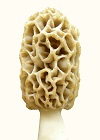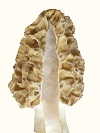 |
|
Research Photo Pages


|
Animal Phenotypes A likely example of phenotypic variation in humans is differences in muscles cells. Humans have two types of muscle strands in their cells: slow and fast. Slow muscles are needed in cold climates, because they use oxygen at a lower rate and promote endurance. Fast muscles are needed in warm climates for fast responses, where endurance is not as important. My impression is that slow muscles are inherited from Neanderthals, and fast muscles from Cro-Magnon. After the genes were mixed together, differences in muscle types needed to be maintained due to the different environments that humans find themselves in. Each person has a different ratio of fast to slow strands in their muscle cells. Persons with a high ratio of slow strands are good at long distance running, because they have more endurance. Persons with fast muscles are better at tennis, which requires fast responses. Gene exchange should have caused the human population to homogenize in regard to muscle types, at least in localized areas, as occurred with other properties. However, there was a need to maintain both types of muscles, because humans migrate rapidly finding themselves in various environments. To maintain variations in muscle types, while gene exchange homogenizes the gene pool, the differences would have to be phenotypic only. This means different alleles are expressed in a semi-stable manner, as occurs during embryo development to create different types of cells, while the genomes are identical.
|
